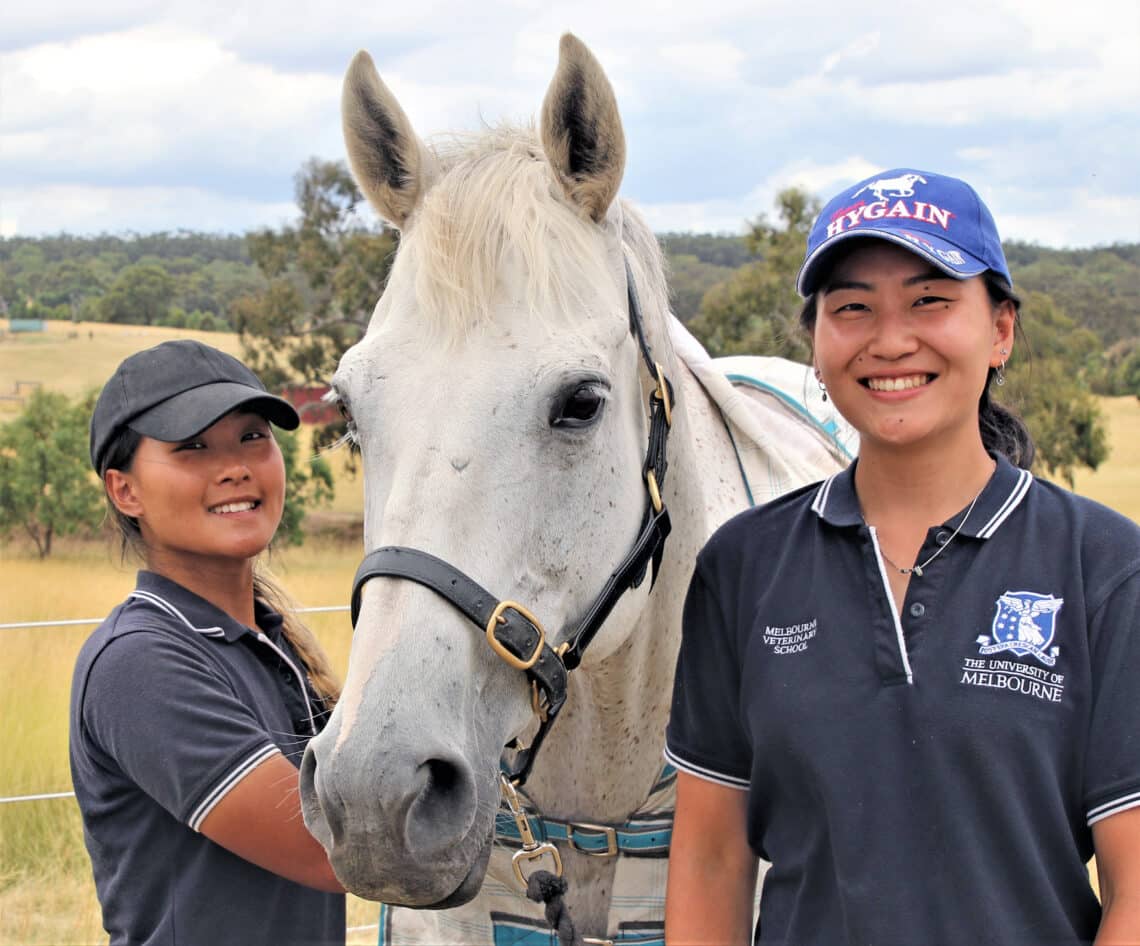An independent not for profit organisation, Living Legends nurtures a connection between the community and the racing champions they love.
A passionate advocate for the Living Legends charity, Dr Andrew Clarke has been a driving force behind this unique retirement home for champion racehorses. Located just 21 kilometres from the Melbourne CBD, Living Legends is modelled on the Home of Rest for Horses charity in the UK, which was established to care for London’s retired cab horses.
Andrew’s involvement with racehorses began after graduating as a vet, when he headed off for a stint overseas, during which he completed a PhD at the University of Bristol. Funded by the Home of Rest for Horses, his research included exploring the impact of air quality and viruses on racehorses. Several years in Canada with a racing industry affiliated research centre followed.
It was when he returned to Australia to take up a professorial position at Melbourne University’s Equine Centre that he joined the board of Living Legends, an organisation committed to delivering a life of care for renowned racehorses when they retired from the track.
Living Legends had its genesis in a group of people, many of whom owned or part-owned racehorses, dedicated to establishing a rest home for champion horses. “The driving force behind it began with a horse called Fields of Omar,” Andrew explains. “Some of the owners were talking about what would happen when he retired. Many successful geldings had informal fan clubs behind them, but once they retired they often disappeared from sight.”

Recognising that people develop deep connections with these horses, the group explored ways in which successful racehorses could be kept in the public eye, while at the same time giving them the kind of retirement they deserved. “And that was how the Living Legends concept grew,” Andrew recalls.
Established in 2006, Living Legends is situated at Woodlands Historic Park, a long-standing Thoroughbred breeding and spelling facility, which incorporates a heritage listed homestead and gardens. “Woodlands has had horses on it since the 1840s, so I believe it’s one of the most historic properties in the southern hemisphere,” Andrew notes.
Starting out was not an easy ride for the charity, which initially opened for only three days a week. “It was a big challenge to get going, and the year after we opened, equine influenza hit Victoria.” Given that their only revenue was generated by taking the horses out into the community to appear at race days, functions, equestrian competitions and other events, coupled with bringing visitors onto the property to interact with the horses, the very necessary restrictions put in place to prevent the spread of EI created a significant financial hurdle.
Nonetheless, the charity got through the hard times and set about improving the property. “Things were tight for a few years, looking after the paddocks, homestead, outbuildings, conservation work, insurances, infrastructure and other costs,” Andrew says. “In the early days, life after racing for horses wasn’t an issue, but over the years, the racing industry has really prioritised it.”
Their Legends Under Saddle program allows staff to hone their horse handling skills, and gives tertiary students the opportunity to secure the industry placement they require before graduation. “This program is really important on several fronts. Last year we had over 60 vet equine studies and agriculture students completing their degrees,” Andrew explains, “and while they’re here they get to see what’s involved in training a horse off the track.”

While not all the Legends are suitable for retraining, the ones that can be are well-received by visitors. “The general public get a kick out of seeing a horse being ridden. People in the horse industry take riding for granted, but for people who live in the city it’s so foreign. That’s another one of our roles, to provide the connection for people who otherwise don’t get that exposure.”
The estate hosts a variety of guests, from school children to seniors brought from their retirement homes in buses. “They love getting the smell of horses on their hands,” Andrew muses. “Interestingly, we also often see guests who we call our ‘bucket list visitors’. These people have a terminal diagnosis, and they want to come and see a particular winner, like Apache Cat. To me, that really reinforces that there are some deep connections behind these horses. It’s really special.”
The experience offered by Living Legends has been recognised by Victoria Tourism, an achievement of which Andrew is justifiably proud. The 170-acre estate is open seven days a week, and cares for 34 horses – five of which are Melbourne Cup winners. Their foundation horses, all celebrities in racing circles, included Might and Power, Doriemus and Better Loosen Up, all of whom are now laid to rest in the Living Legends’ Memorial Garden. “These horses were super impressive,” Andrew
says, “and it’s important they’re given the respect and dignity they deserve. I like to say that the Memorial Garden is the racing version of the Field of Dreams.”
For more information of their tours, day trips and other packages, visit Living Legends.
Main image: Sara and 2016 Melbourne Cup winner Almandin.



